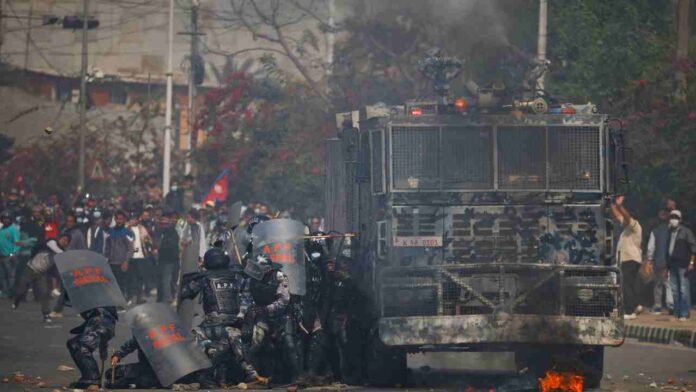Two dead, 45 injured as pro-monarchy protests spiral into violence; government deploys army, extends curfew until Saturday morning.
Kathmandu [Nepal], March 29: Following a day of chaos and bloodshed in the capital, the Kathmandu District Administration Office has extended the ongoing curfew in several parts of the city until 7 AM (local time) Saturday, as violent pro-monarchy protests rocked the valley on Friday.
The curfew extension was announced in an official notice by Chief District Officer Rishiram Tiwari, citing a need to restore order after escalating violence left two people dead and 45 others injured, including seven with gunshot wounds.
“This curfew is necessary to maintain peace and protect public property,” Tiwari said, warning against further violations.
The unrest erupted after pro-monarchist agitators led by businessman Durga Prasai stormed through police barricades in the capital, prompting a clash that spiraled into arson, looting, and targeted attacks on political party offices.
The violence prompted authorities to impose the curfew from 4:25 PM to 10 PM, later extended overnight. The restricted areas include Gaushala to Tribhuvan International Airport, Gairigaun, Tinkune, Koteshwar, Jadibuti Bridge, Balkumari Bridge, Baneshwar Chowk, Shankhamul Bridge, and Old to New Baneshwar Chowk.
Protesters torched a house, vandalized shops, and attempted to storm offices of the Communist Party of Nepal (Unified Socialist) and the Communist Party of Nepal (Maoist Center). Government vehicles were also set on fire, and widespread looting was reported in areas like Bhatbhateni.
As the situation spiraled, the Nepal Army was deployed to assist the local police in enforcing the curfew and maintaining law and order—a rare move under peacetime.
The protests were supported by the Rastriya Prajatantra Party (RPP), a right-wing, pro-monarchy faction that is currently the fifth-largest party in Nepal’s parliament.
Those wounded during the violence are being treated at Tribhuvan Teaching Hospital and the National Trauma Centre.
With the anniversary of the 2006 People’s Movement approaching—an event that led to the abolition of the monarchy—tensions are high as royalist sentiment resurfaces in parts of Nepal.


